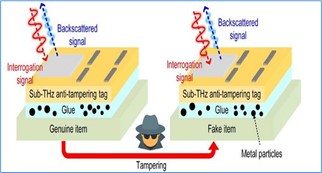PREVIOUS
Terahertz anti-tampering tags
April 13 , 2024
614 days
887
0
- MIT researchers have developed a new iteration of their anti-tampering ID tag using terahertz waves.
- This tiny tag is significantly smaller and cheaper than RFIDs.
- It will address a major vulnerability by incorporating microscopic metal particles into the glue that adheres the tag to an object.
- The terahertz waves are then used to detect the unique pattern formed by these particles on the item’s surface, creating a fingerprint-like authentication system.
- The new anti-tampering tag prevents the counterfeiting by destroying the authentication pattern when the tag is peeled off and reattached to a fake item.
- The metal particles act as mirrors for terahertz waves, producing a distinct reflected pattern that is impossible to duplicate once the glue interface is compromised.

Leave a Reply
Your Comment is awaiting moderation.


